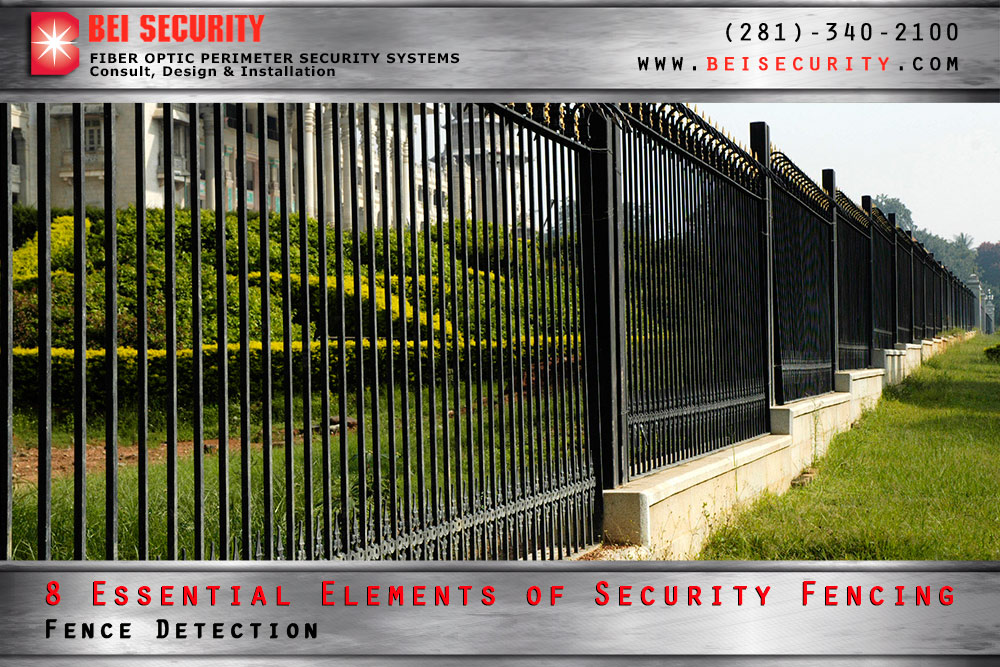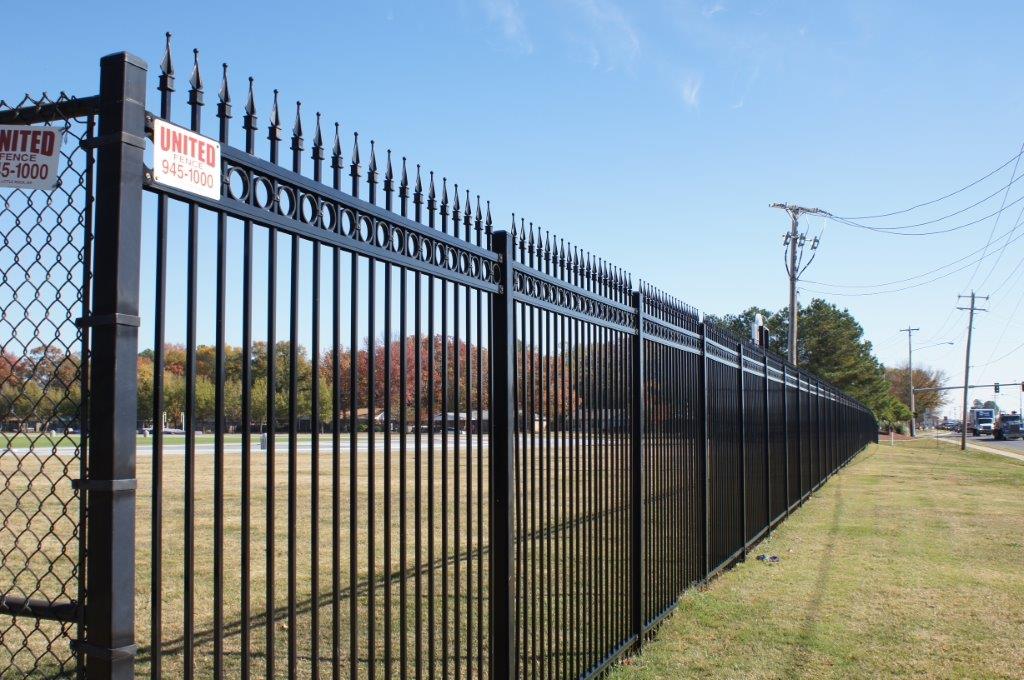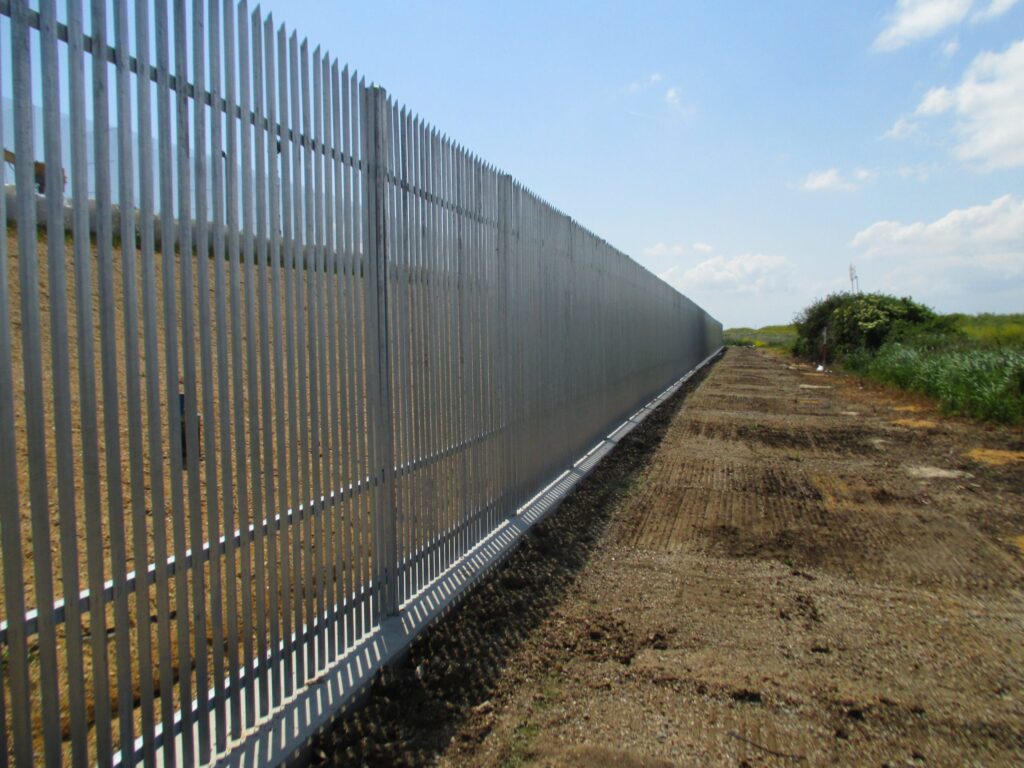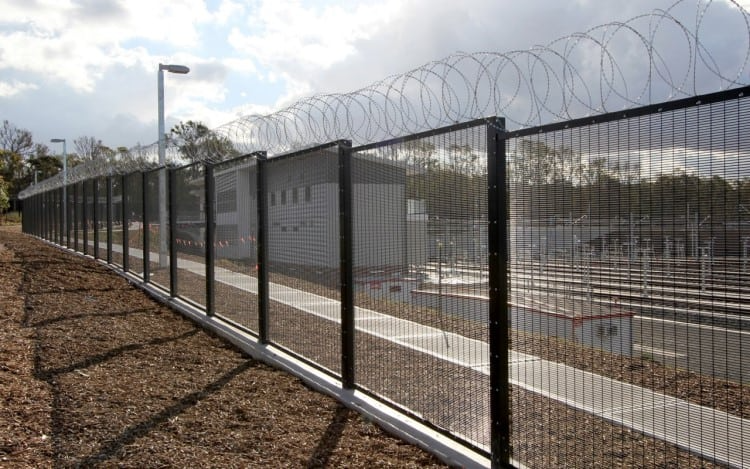Looking to expand his blog, “Fencedude.com,” the author aims to provide comprehensive and engaging content about fences. With a focus on educating readers about various fence types, sizes, shapes, materials, and their suitability for different needs, the author plans to explore the benefits, considerations, durability, maintenance requirements, and aesthetic appeal of each type. Additionally, the author intends to address the importance of choosing the appropriate fence size and shape based on specific requirements, such as property size, desired level of enclosure, and architectural considerations. Ultimately, the goal is to offer valuable knowledge and practical advice to help readers make informed decisions when selecting and installing fences. To assist in achieving this, the author seeks a list of 200 relevant topics to ensure the blog covers the diversity of fence types, sizes, shapes, materials, and their suitability for various purposes. By catering to the interests and preferences of the target audience, the blog aims to become a trusted resource in the realm of all things related to fences.

Benefits of Security Features for Fences
Enhanced Privacy
Having security features on your fence can provide you with enhanced privacy, allowing you to enjoy your outdoor space without worrying about prying eyes. Features such as privacy slats or top-locking fences can restrict the view into your property, giving you peace of mind.
Increased Safety
Security features can significantly increase the safety of your property. With security gates, alarm systems, and surveillance systems, you have better control over who enters your premises. This is particularly important for homes with children or pets, as it helps prevent them from wandering off or potential theft.
Deterrence of Intruders
Security features act as a strong deterrent for intruders. Fences equipped with anti-climbing features, barbed wire, or electric fencing make it difficult for unauthorized individuals to trespass onto your property. This not only protects your belongings but also ensures the safety of your loved ones.
Protection of Property
Security features help protect your property from theft, vandalism, and damage. By adding security gates, alarm systems, and surveillance cameras, you create a barrier that makes it challenging for intruders to access your property. This can give you peace of mind, especially when you are away from home.
Reduced Noise
Certain security features, such as privacy slats or solid materials like concrete or composite, can help reduce noise from neighboring properties or busy streets. This is particularly beneficial if you live in a noisy environment and want to create a peaceful and quiet outdoor space.
Aesthetically Pleasing
Security features for fences are not only functional but can also enhance the overall aesthetics of your property. Many security features, such as wrought iron, ornamental aluminum, or glass, add a touch of elegance and visual appeal to your fence. You can choose from a variety of styles and designs that complement your property’s architecture.
Durability
Security features are built to withstand harsh weather conditions and provide long-lasting durability. Materials like steel, wrought iron, aluminum, or vinyl are known for their strength and resilience, ensuring that your fence remains sturdy and secure for years to come.
Low Maintenance
Security features are often designed to be low maintenance, saving you time and effort. Materials like aluminum, vinyl, or composite require minimal upkeep and do not require painting or staining. Regular cleaning and inspections are usually sufficient to keep your fence in good condition.
Customizability
Security features provide you with the opportunity to customize your fence according to your specific needs and preferences. You can choose from various materials, colors, styles, and designs to create a fence that reflects your personal taste and complements the aesthetics of your property.
Added Property Value
Investing in security features for your fence can increase the value of your property. Potential homebuyers value security and privacy, and a well-designed and secure fence can be a selling point. It can also enhance the overall curb appeal of your property, making it more attractive to potential buyers.
Different Types of Security Features for Fences
Security Gates
Security gates are an essential security feature for fences, allowing you to control access to your property. They can be manually operated or automated with electronic controls, providing convenience and additional security.
Anti-Climbing Features
Anti-climbing features such as pointed finials, spikes, or extensions on the top of the fence prevent intruders from climbing over and accessing your property. They act as a strong deterrent against unauthorized access.
Surveillance Systems
Surveillance systems, including cameras and recording devices, help monitor your property and deter criminal activity. They provide visual evidence in the event of a security breach and can be integrated with alarm systems for added security.
Intrusion Detection Systems
Intrusion detection systems use various sensors and technologies to detect unauthorized entry onto your property. These systems can include motion sensors, infrared detectors, and vibration sensors that trigger an alarm or alert when someone crosses the fence perimeter.
Alarm Systems
Alarm systems are an effective security feature that alerts you or a security monitoring company when there is a breach in your fence. They often work in conjunction with other security features such as surveillance systems or intrusion detection systems.
Electric Fencing
Electric fencing provides a strong deterrent against intruders. It delivers a non-lethal electric shock to anyone who tries to touch or climb the fence. Electric fencing is commonly used in commercial or high-security areas.
Barbed Wire
Barbed wire is a cost-effective and highly effective security feature for fences. It consists of sharp, pointed wires that can cause significant injury to anyone attempting to climb or breach the fence.
Security Lighting
Installing security lighting along your fence enhances visibility and acts as a deterrent for potential intruders. Motion-activated lights can be highly effective in illuminating your property when someone approaches.
Privacy Slats
Privacy slats are an aesthetic and functional security feature that enhances privacy. They can be inserted into chain-link fences, blocking the view into your property while maintaining airflow and light penetration.
Top-Locking Fences
Top-locking fences have a unique locking mechanism at the top, preventing the fence panels from being lifted or dislodged. This feature makes it difficult for intruders to breach the fence and gain access to your property.
Factors to Consider When Choosing Security Features for Fences
Level of Security Needed
Consider the level of security required for your property. Determine what you want to protect and the potential risks you may face. Higher-security areas may require more advanced security features compared to residential properties.
Budget
Set a budget for your security fence project, including both the cost of materials and installation. Consider the long-term costs of maintenance and potential upgrades. Balancing your budget with the level of security you require is crucial.
Property Characteristics
Take into account the characteristics of your property, including the size, terrain, and existing structures. These factors can influence the type of security features you can install and affect the overall effectiveness of the security system.
Local Regulations
Check local regulations and zoning laws before installing security features for your fence. Some areas may have restrictions or specific requirements for certain security features. Compliance with local regulations is essential.
Aesthetics
Consider how the security features will blend with the overall aesthetics of your property. Choose materials, colors, and designs that complement the architectural style and enhance the visual appeal of your fence.
Maintenance Requirements
Evaluate the maintenance requirements of different security features. Some materials or systems may require regular inspections, cleaning, or upkeep to ensure optimal performance and longevity.
Warranty
Check if the security features you are considering come with warranties. A warranty can provide peace of mind and protect your investment in case of any manufacturing defects or malfunctions.
Ease of Installation
Consider the complexity of installing different security features. Some features may require professional installation, while others are more suitable for DIY projects. Determine your capabilities and the time it will take to install the features.
Compatibility with Existing Fence
If you have an existing fence, ensure that the security features you choose are compatible with it. Some features may require modifications or additional support to integrate seamlessly with your current fence.
Selecting the Right Security Features for Specific Needs
Residential Security
For residential properties, prioritize features that enhance privacy and provide convenience, such as security gates with electronic controls. Surveillance systems and alarm systems can provide an additional layer of protection.
Commercial Security
Commercial properties may require a higher level of security, including features like security gates, intrusion detection systems, surveillance systems, and security lighting. Consider the specific needs of your business and the level of access control required.
Pool Security
Ensuring pool security is essential for the safety of children and pets. Security features for pool fences may include self-closing gates, latches with childproof locks, and alarms that sound when the fence is breached.
Perimeter Security
Perimeter security requires a comprehensive approach. Consider a combination of security features like anti-climbing features, intrusion detection systems, surveillance systems, and electric fencing to protect the boundaries of your property.
Animal Enclosure Security
If you have animals that need to be contained within your property, choose security features that prevent them from escaping and protect them from external threats. Consider features like mesh or wire fencing, electric fencing, and secure gates.
Privacy Enhancement
Enhancing privacy can be a priority for many property owners. Privacy slats, top-locking fences, or solid materials like vinyl or wood can provide the desired level of privacy while also adding security to your fence.
Aesthetics and Landscape Integration
When aesthetics and landscape integration are key considerations, choose security features that complement the overall design of your property. Ornamental aluminum, wrought iron, or glass panels can provide both security and visual appeal.
Temporary or Portable Security Needs
For temporary or portable security needs, consider features that are easy to install and move, such as temporary fencing panels, portable gates, or mobile surveillance systems. These features provide flexibility and convenience.
Specialized Security Requirements
Specific properties or industries may have unique security requirements. Consult with security professionals to determine the most suitable security features for your specialized needs, such as industrial facilities, government buildings, or high-risk areas.

Common Materials Used for Security Fences
Steel
Steel is known for its strength and durability, making it a popular choice for high-security areas. It can withstand harsh weather conditions and offers excellent resistance against impact or cutting.
Aluminum
Aluminum is lightweight, corrosion-resistant, and requires minimal maintenance. It is often used for ornamental fences, combining aesthetics with functionality.
Wrought Iron
Wrought iron is a classic and elegant choice for security fences. It provides exceptional strength and durability, adding a touch of sophistication to any property.
Vinyl
Vinyl fences are highly versatile, offering a wide range of styles and colors. They are known for their low maintenance requirements, resistance to fading or cracking, and longevity.
Wood
Wooden fences provide a natural and traditional look. They can be customized to various styles and heights, and different types of wood offer different levels of strength and durability.
Chain-Link
Chain-link fences are known for their affordability and functionality. They are often used in commercial or industrial settings, and additional security features such as privacy slats or barbed wire can be added.
Composite
Composite materials offer the appearance of wood with increased durability, resistance to rotting or warping, and low maintenance requirements. They are a popular choice for both residential and commercial properties.
Glass
Glass panels or balusters are a modern and stylish option for security fences. They provide visibility while adding a contemporary touch to your property. Laminated or tempered glass is used for added safety and security.
Concrete
Concrete fences are robust and long-lasting. They offer excellent noise reduction and can be designed in various patterns or textures to match the aesthetics of your property.
Bamboo
Bamboo fences provide a natural and sustainable option. They are known for their resistance to pests and weather elements, offering both security and an eco-friendly choice.
Factors Influencing the Choice of Material for Security Fences
Strength and Durability
The level of strength and durability required depends on the desired security level and the potential risks. Consider materials that offer resistance to impact, cutting, or forceful entry.
Resistance to Weather Elements
Choose materials that can withstand your local climate conditions. Some materials may be more prone to corrosion, fade, or degrade over time when exposed to extreme temperatures, high humidity, or intense sunlight.
Maintenance Requirements
Consider the maintenance requirements of different materials. Some materials, like vinyl or aluminum, are low maintenance and only require occasional cleaning, while others, like wood, may require regular staining or sealing.
Aesthetic Appeal
The aesthetic appeal of the fence is an important consideration. Choose materials that complement your property’s architecture and landscaping, enhancing the overall visual appeal.
Cost
Set a budget for your security fence project and consider the cost of materials, installation, and long-term maintenance. Balance the cost with the level of security and aesthetics desired.
Level of Privacy
Some materials provide better privacy than others. Evaluate your privacy needs and select materials that restrict the view into your property while maintaining airflow and light penetration.
Environmental Considerations
Consider the environmental impact of different materials. Some materials, like bamboo or composite, are more sustainable and eco-friendly compared to others that may require significant resources for production.
Installation Complexity
Different materials have varying installation complexities. Some materials may require professional installation, while others can be suitable for DIY projects. Evaluate your capabilities and seek professional assistance if needed.
Longevity
Consider the expected lifespan of the materials. Some materials, like steel or wrought iron, are known for their long-lasting durability, while others may require replacement or repairs after a certain period.
Customizability
Choose materials that offer customization options, such as different colors, styles, or designs. This allows you to create a fence that matches your personal taste and property aesthetics.

Suitable Security Fence Sizes and Shapes for Different Needs
Height Considerations
The height of the fence plays a crucial role in its security capabilities. For residential properties, a height of at least 6 feet is often recommended, while commercial properties may require taller fences based on their specific needs.
Width and Length Considerations
Consider the width and length of the fence panels. Longer panels can minimize the number of seams or joints, increasing the overall strength and security of the fence.
Boundary Mapping
Define the boundaries of your property accurately to determine the length and shape of the fence. Ensure your fence follows property lines and does not encroach on neighboring properties.
Curved or Straight Designs
Curved or rounded designs can add an aesthetic appeal to your fence. However, straight designs are often preferred for security purposes as they reduce potential hiding spots for potential intruders.
Gate Sizing
Gates should be proportionate to the fence and accommodate easy access for authorized personnel. Consider the size of vehicles or equipment that may need access to your property when determining gate sizing.
Rounded or Angular Tops
Choose between rounded or angular tops for your fence panels. Rounded tops provide a softer look, while angular tops can act as a deterrent for climbing or scaling the fence.
Sliding or Swinging Gates
Determine if you need sliding or swinging gates based on your property and access requirements. Sliding gates are suitable for properties with limited space, while swinging gates provide a more traditional look.
Specialized Shapes for Aesthetic Purposes
Consider specialized shapes or architectural elements for aesthetic purposes. Ornamental fences may include decorative motifs or patterns that add visual interest to your property.
Multi-Level Designs
For added security, consider multi-level designs with varying heights. This can provide an additional barrier against intruders and enhance the overall appearance of your fence.
Integration with Existing Structures
Ensure the design of your fence integrates seamlessly with existing structures, such as walls, buildings, or landscaping features. This creates a cohesive and visually appealing look for your property.
Tips for Maintaining and Upgrading Security Features for Fences
Regular Inspections
Perform regular inspections of your security features to identify any damage or signs of wear and tear. Check for loose or damaged components, and address any issues promptly.
Cleaning and Repainting
Clean your fence regularly to remove dirt, debris, or mold that can accumulate over time. Repainting or resealing may be necessary to maintain the appearance and protection of certain materials.
Repairing Damaged Parts
Repair any damaged parts of your fence promptly. Whether it’s a broken gate latch, a loose wire, or a malfunctioning security feature, addressing the issue quickly ensures the continued effectiveness of your security system.
Upgrading to Advanced Security Technologies
Stay up to date with advanced security technologies and consider upgrading your security features when necessary. New advancements can provide enhanced functionality, convenience, and reliability.
Replacing Outdated Components
If certain components of your security features become outdated or no longer function optimally, consider replacing them. This ensures that your security system remains effective and up to date.
Adding Additional Security Layers
Evaluate your security needs periodically and consider adding extra layers of security when necessary. This can include features such as additional cameras, sensors, or improved lighting.
Updating Surveillance Systems
Stay current with surveillance technology and update your systems as needed. Consider higher-resolution cameras, remote monitoring capabilities, or cloud storage options to enhance your surveillance system.
Enhancing Lighting Systems
Review your outdoor lighting to ensure proper visibility and deterrence. Consider upgrading to LED lighting, motion-activated lights, or smart lighting systems that enhance security and energy efficiency.
Reinforcing Weak Areas
Identify weak areas in your fence or security system and reinforce them. This can include adding additional support to gates, reinforcing joints or posts, or improving the overall structural integrity of the fence.
Maintaining Adequate Gate Functionality
Regularly maintain and lubricate your gate mechanisms to ensure smooth operation. Replace worn-out hinges, locks, or automation components to keep your gate functioning properly.

Considerations for DIY Installation of Security Features for Fences
Skill and Experience Level
Assess your own skill and experience level in fence installation. Some security features may require professional knowledge or specialized tools, so it is important to be realistic about your capabilities.
Knowledge of Local Regulations
Familiarize yourself with local regulations and permit requirements before attempting a DIY installation. Some security features may have specific guidelines or restrictions that must be followed.
Availability of Tools and Equipment
Ensure you have access to the necessary tools and equipment required for the installation. This may include drills, saws, concrete mixers, or specific tools for wiring or automation.
Safety Precautions
Take proper safety precautions during the installation process. This may include wearing protective gear, using caution with power tools, or ensuring proper grounding and wiring.
Time and Effort Investment
Consider the time and effort required for a DIY installation. Installing security features may be more time-consuming and labor-intensive compared to a standard fence installation.
Understanding of Wiring and Electrical Systems
If your security features involve electrical systems, ensure you have a good understanding of wiring and electrical connections. If you are unfamiliar or uncomfortable with these aspects, consider hiring a professional.
Ability to Handle Heavy Materials
Some security features, such as steel or concrete, can be heavy and require equipment or assistance to handle safely. Evaluate your physical capabilities and seek help if needed.
Project Budget
Consider the overall project budget, including material costs and potential mistakes or adjustments during the installation process. Be prepared for unforeseen expenses that may arise.
Seeking Professional Assistance when Necessary
If you are unsure about any aspect of the installation or have concerns about your capabilities, it is wise to seek professional assistance. This ensures the security features are installed correctly and function optimally.
Obtaining Permits and Approvals
Check if permits or approvals are required for the installation of certain security features. Ensure you comply with local regulations and obtain the necessary permissions before initiating the project.
Professional Installation of Security Features for Fences
Benefits of Professional Installation
Professional installation of security features offers numerous benefits and peace of mind. Some advantages include:
Expertise and Experience
Professional installers have the necessary expertise and experience to handle all aspects of the installation, including proper placement, wiring, and integration.
Compliance with Building Codes
Professional installers are knowledgeable about local building codes and regulations, ensuring that the installation meets all safety and legal requirements.
Warranty and Insurance
Professional installation often comes with warranties on labor and materials. This provides protection and ensures that any issues or defects are addressed promptly.
Efficiency and Time-Saving
Hiring professionals saves you the time and effort required for a DIY installation. They have the necessary skills and tools to complete the project efficiently and effectively.
Access to Specialized Equipment
Professional installers have access to specialized equipment necessary for the installation, ensuring quality and precision.
Project Management
Professional installers manage the entire installation process, from initial planning to final implementation. This ensures smooth execution and minimizes potential disruptions.
Safety Assurance
Professional installers prioritize safety throughout the installation process. They are experienced in handling potential risks and ensure compliance with safety standards.
Custom Design and Tailored Solutions
Professional installers can provide custom design options and tailored solutions based on your specific needs and property requirements.
Post-Installation Support
Professional installers often offer post-installation support, including maintenance services, repairs, or troubleshooting. This ensures the continued functionality and longevity of your security features.

